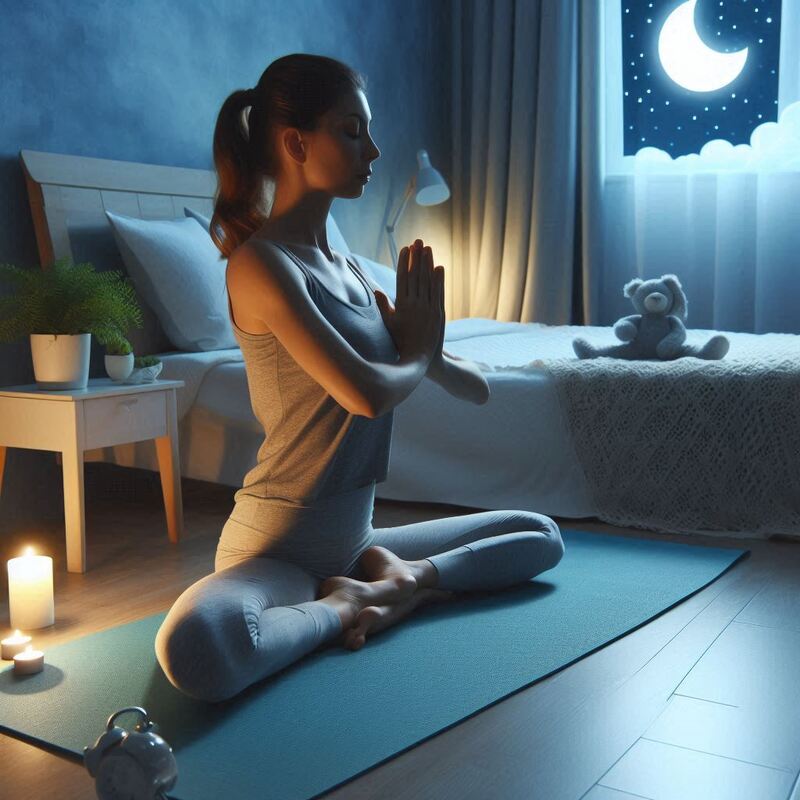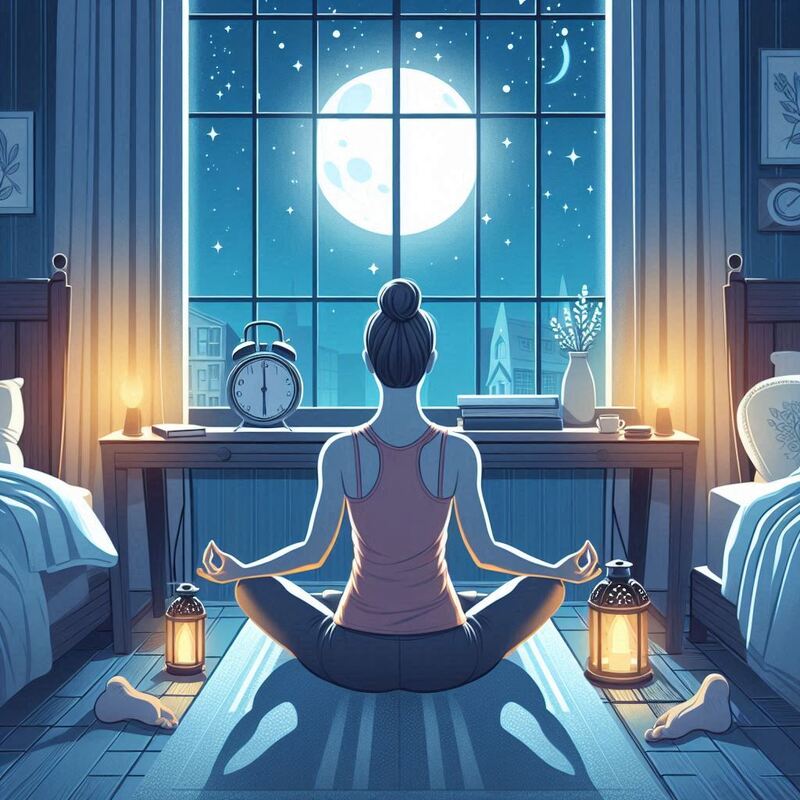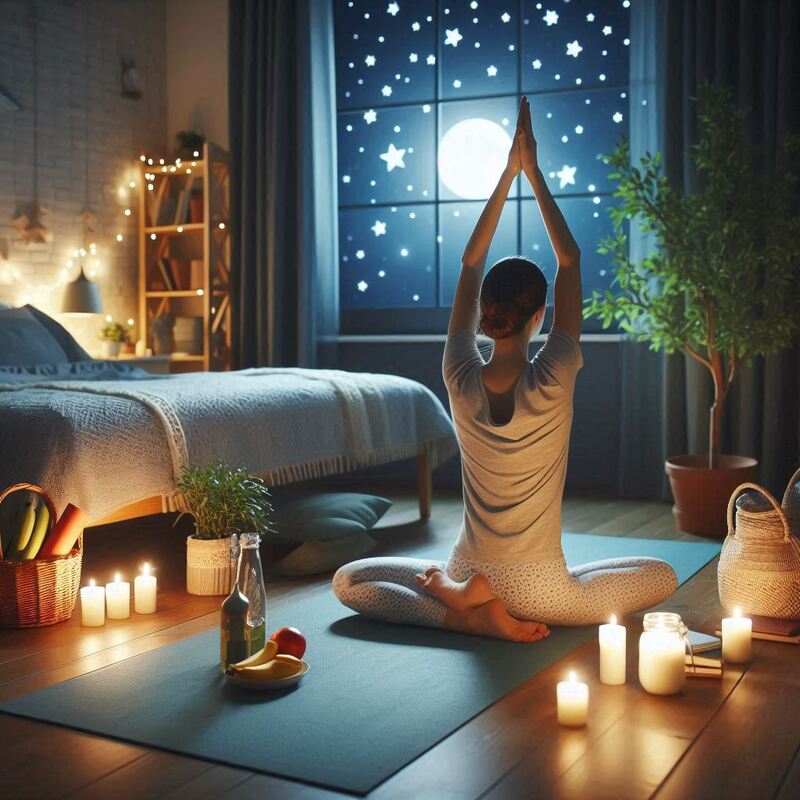Yoga for Better Sleep

Yoga for Better Sleep
Yoga for Better Sleep: Nighttime Routines for Restful Nights
In today’s fast-paced world, many people struggle with getting a good night’s sleep. Stress, anxiety, and the demands of daily life often disrupt our natural sleep patterns, leaving us feeling exhausted and unrested. However, incorporating yoga into your nightly routine can significantly improve your sleep quality. Yoga offers a holistic approach to relaxation, combining gentle stretches, breath control, and mindfulness to prepare your body and mind for restful sleep. This article explores how yoga can enhance sleep, presents effective nighttime yoga routines, and provides tips for creating a calming bedtime practice.
The Benefits of Yoga for Sleep
Yoga for Better Sleep
- Reduces Stress and Anxiety: Yoga activates the parasympathetic nervous system, which promotes relaxation and reduces stress hormones like cortisol. This helps calm the mind and body, making it easier to fall asleep and stay asleep.
- Relieves Muscle Tension: Gentle yoga stretches relax tight muscles and alleviate physical tension accumulated throughout the day. This physical relaxation is crucial for achieving a state of restfulness.
- Regulates Breath: Pranayama, or breath control, is a key component of yoga. Deep, slow breathing techniques stimulate the vagus nerve, encouraging a state of calm and signaling the body that it is time to rest.
- Enhances Mindfulness: Yoga encourages mindfulness and presence, which can help quiet the mind and reduce the racing thoughts that often interfere with sleep.
- Balances the Nervous System: Regular yoga practice helps balance the nervous system, creating a more stable and calm internal environment conducive to sleep.
Yoga for Better Sleep
Designing Your Nighttime Yoga Routine
A well-rounded nighttime yoga routine should include gentle stretches, restorative poses, and calming breathwork. Here is a suggested sequence that can be completed in 20-30 minutes:

1. Gentle Warm-Up
Cat-Cow Pose (Marjaryasana-Bitilasana): Start in a tabletop position with your hands and knees on the mat. Inhale, arch your back (cow pose), and exhale, round your spine (cat pose). Repeat for 5-10 breaths to gently warm up the spine.
Child’s Pose (Balasana): From the tabletop position, sit back on your heels and stretch your arms forward, resting your forehead on the mat. Take deep breaths, allowing your body to relax.
2. Relaxing Stretches
Yoga for Better Sleep
Seated Forward Bend (Paschimottanasana): Sit with your legs extended in front of you. Inhale, lengthen your spine, and exhale, fold forward from the hips, reaching for your feet or shins. Hold for 5-10 breaths, feeling the stretch in your hamstrings and lower back.
Reclined Pigeon Pose (Supta Kapotasana): Lie on your back with your knees bent. Cross your right ankle over your left thigh, and gently pull your left knee towards your chest. Hold for 5-10 breaths, then switch sides. This pose releases tension in the hips and lower back.
Legs Up the Wall Pose (Viparita Karani): Sit with one side of your body against a wall, then swing your legs up the wall as you lie back. Extend your arms out to the sides, palms facing up. Hold for 5-10 minutes, allowing gravity to assist in relaxation and promoting circulation.
3. Restorative Poses
Reclining Bound Angle Pose (Supta Baddha Konasana): Lie on your back and bring the soles of your feet together, allowing your knees to fall open to the sides. Place a bolster or pillows under your knees for support. Rest your hands on your abdomen and breathe deeply.
Supported Bridge Pose (Setu Bandhasana): Lie on your back with your knees bent and feet hip-width apart. Lift your hips and place a block or bolster under your sacrum for support. Rest your arms by your sides and hold for 5-10 breaths.
4. Calming Breathwork
Yoga for Better Sleep
Alternate Nostril Breathing (Nadi Shodhana): Sit comfortably with your spine straight. Close your right nostril with your thumb, inhale through your left nostril, then close your left nostril with your ring finger and exhale through your right nostril. Inhale through the right nostril, then switch and exhale through the left nostril. Repeat for several rounds to balance the nervous system.
4-7-8 Breathing: Inhale quietly through your nose for a count of 4, hold your breath for a count of 7, and exhale completely through your mouth for a count of 8. Repeat for 4-8 breaths to induce a state of relaxation. Yoga for Better Sleep
5. Meditation and Mindfulness
Body Scan Meditation: Lie on your back in Savasana (Corpse Pose). Close your eyes and bring your awareness to your breath. Gradually scan your body from head to toe, noticing any areas of tension and consciously relaxing them. This practice helps release residual tension and prepares the mind for sleep.
Loving-Kindness Meditation (Metta): Sit or lie down comfortably. Close your eyes and take a few deep breaths. Silently repeat phrases such as “May I be peaceful, may I be healthy, may I sleep well,” extending these wishes to others in your life. This meditation cultivates a sense of calm and compassion.
Yoga for Better Sleep
Tips for Creating a Calming Bedtime Practice

- Consistency is Key: Establish a regular bedtime routine that includes yoga. Consistency helps train your body and mind to recognize when it is time to wind down and prepare for sleep.
- Create a Relaxing Environment: Make your bedroom a sanctuary for sleep. Dim the lights, reduce noise, and create a calming atmosphere. Use essential oils like lavender or chamomile to promote relaxation.
- Limit Screen Time: Avoid electronic devices at least an hour before bed. The blue light emitted by screens can interfere with your body’s natural sleep-wake cycle.
- Stay Hydrated, but Avoid Large Meals: Drink water throughout the day to stay hydrated, but avoid large meals or excessive fluids close to bedtime to prevent disruptions in sleep.
- Practice Mindfulness Throughout the Day: Incorporate mindfulness practices into your daily routine to reduce overall stress and promote a sense of calm. Yoga for Better Sleep
- Journal Before Bed: If racing thoughts keep you awake, try journaling before bed. Write down your thoughts and worries to clear your mind and reduce anxiety.
- Use Props for Comfort: Use yoga props like bolsters, blankets, and blocks to support your body in restorative poses. This promotes relaxation and reduces strain.
Conclusion
Incorporating yoga into your nightly routine can significantly enhance your sleep quality and overall well-being. By engaging in gentle stretches, restorative poses, calming breathwork, and mindfulness practices, you can create a holistic approach to winding down and preparing for a restful night’s sleep. Remember, the key to success is consistency, mindfulness, and creating a calming environment that supports relaxation. Embrace the power of yoga for better sleep, and enjoy the benefits of waking up refreshed and rejuvenated each day.